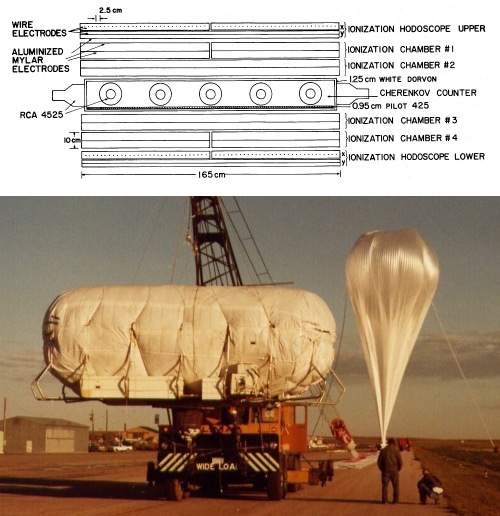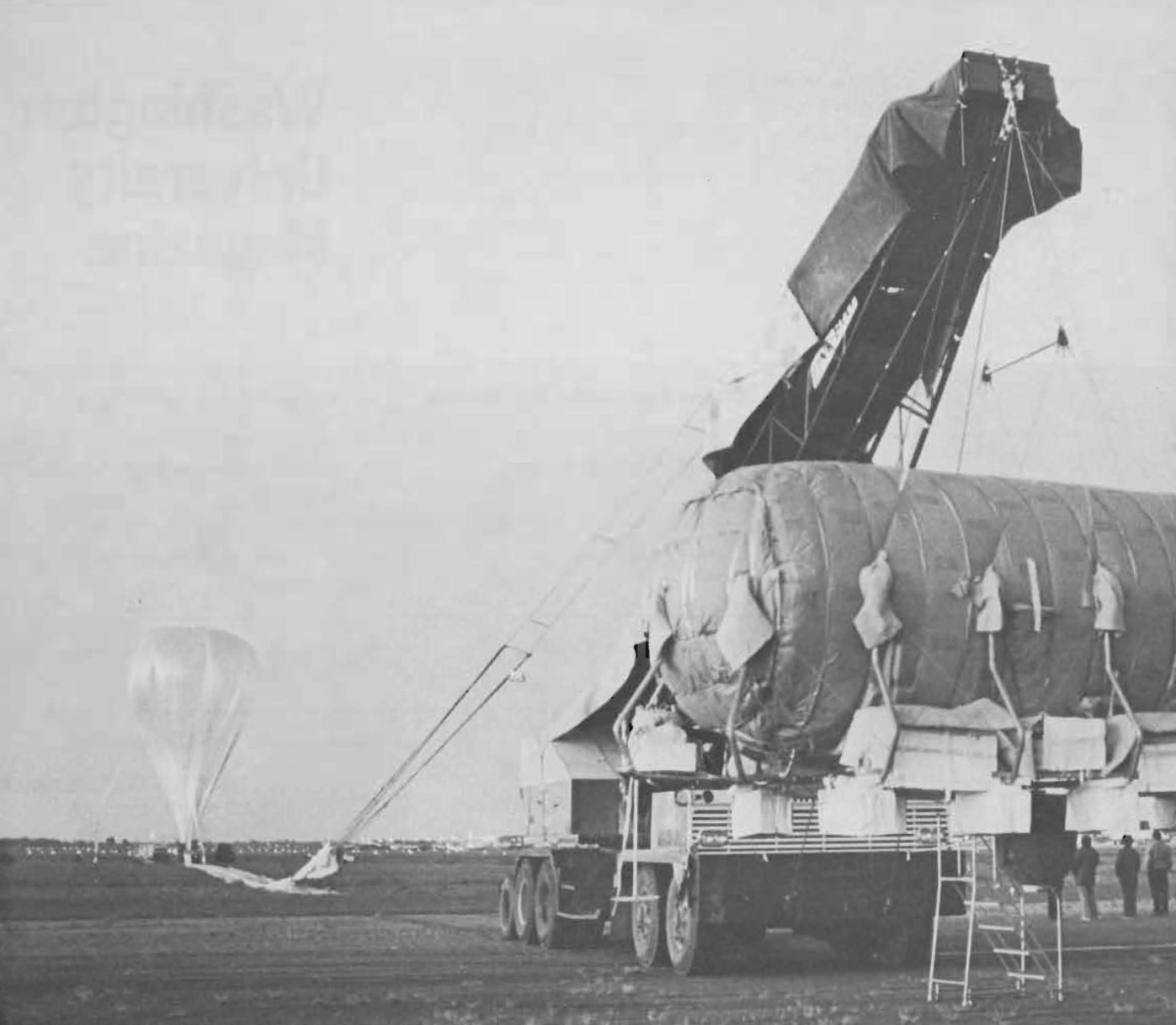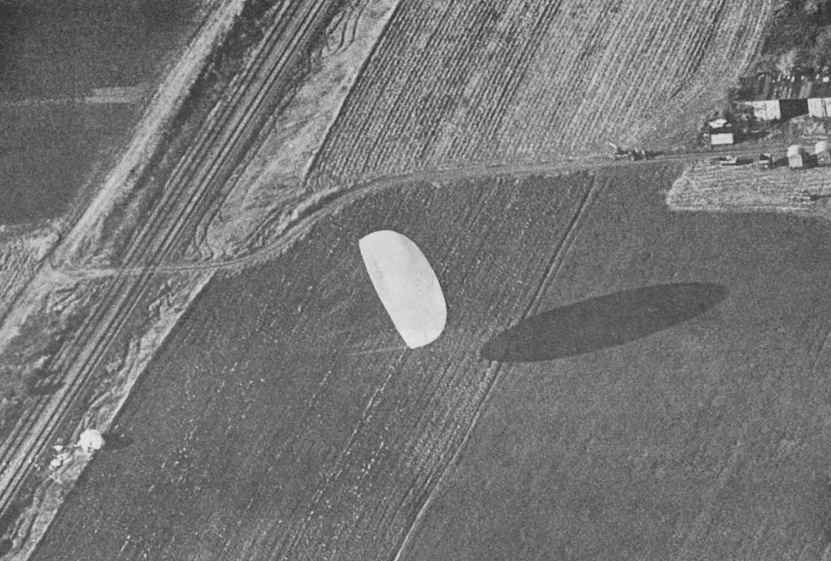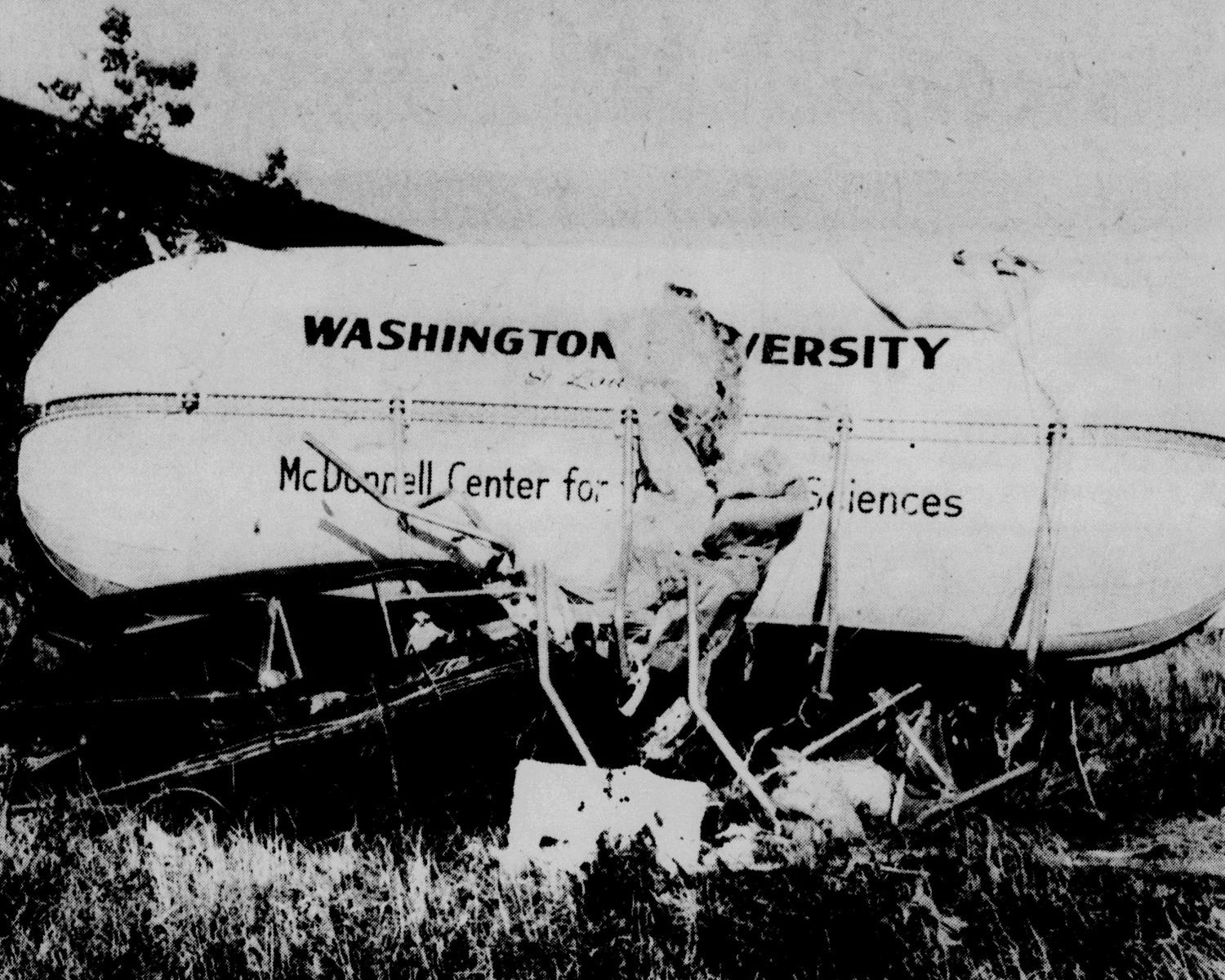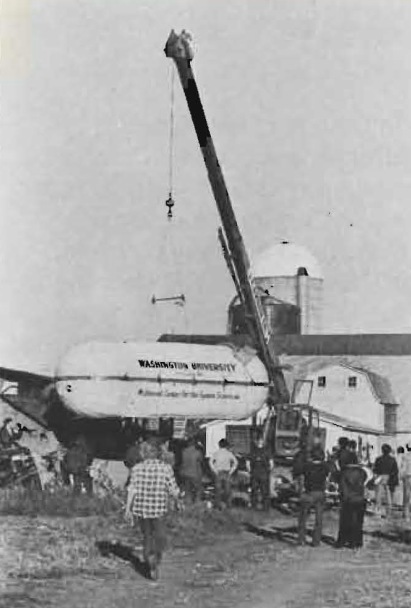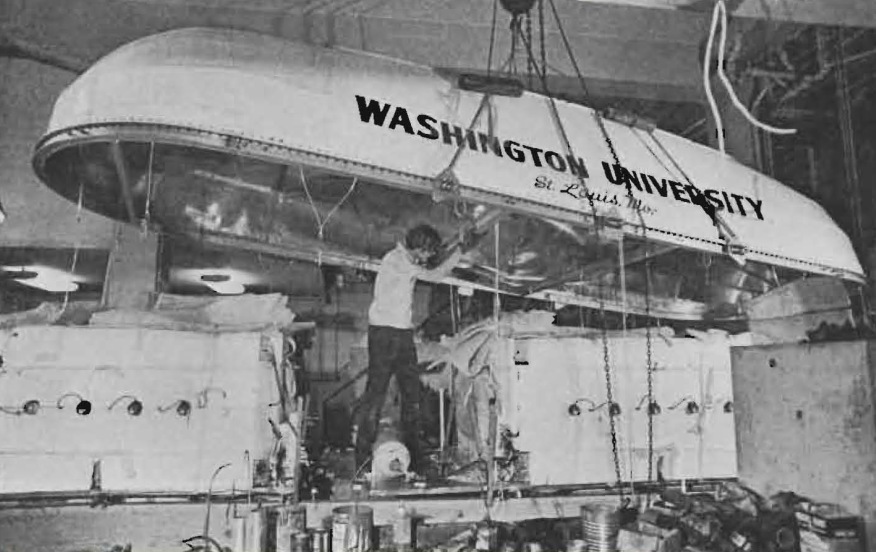Purpose of the flight and payload description
The objective of the flight was to measure the relative abundances of Fe, Co, Ni, Cu, and Zn in the cosmic rays using a large-area balloon-borne electronic detector system. The system was developed by the McDonnell Center for the Space Sciences and Department of Physics at the Washington University in St. Louis.
The detector was composed of two nearly identical systems, side-by-side inside a single aluminum pressure vessel. A cross section of one system is shown in the figure at left and below a picture of the fully assembled system ready to flight. The detector had a large geometrical factor and was very thin to allow for the collection of a large number of cosmic rays with a small probability of nuclear interaction on it. The charge and velocity of each incident nucleus were determined by the dE/dx-C method wherein dE/dx, the rate of energy loss of the nucleus, was measured by the ionization in the ion chamber gas; and C was the intensity of Cerenkov radiation produced by the nucleus in passing through a Lucite radiator.
The measurement of the rate of energy loss, dE/dX, was made by dual gap, pulse ionization chambers. Four independent ionization measurements were made, two above, and two below the Cherenkov counter. The ionization signal, I, was derived by taking the mean of these four measurements. The light output from the 0.64 cm thick Pilot 425 radiator in the Cherenkov counter was measured by two independent sets of photomultiplier tubes. The Cherenkov signal, C, was derived by taking the mean of the signals from these two sets of tubes. The ionization hodoscopes provided the trajectory information necessary to calculate the path-length in each detector and to correct for areal non-uniformities in the ionization and Cherenkov responses.
The cosmic-ray trajectory defined by the hodoscopes also gave the zenith angle of the incoming particles, which was necessary for calculating the actual atmospheric depth traversed by each nucleus. The signals I and C were both proportional to the square of the charge but proportional to different functions of the velocity of the cosmic ray. This allowed to derive a unique charge and energy determination for every element above magnesium (Z=12) in the energy range from 330 to 1200 MeV measured at the middle of the Cherenkov radiator. For iron, the energy interval for essentially unambiguous element identi?cation could be extended to approximately 20 GeV because of the negligible abundance of cobalt (Z=27). To record the events for each of the two detector blocks was used an incremental magnetic tape recorder, which was capable of recording up to five events per second.
The vessel was covered with a special insulation canvas and mounted in a support structure of aluminum tubing that provided a platform for external power supplies, balloon instrumentation, and supplemental landing shock absorbers. The structure was designed to absorb landing forces without affecting the vessel. Ballast was contained in a centrally located canvas hopper under the experiment.
Details of the balloon flight
Balloon launched on: 10/2/1975 at 1:35 utc
Launch site: Joe Foss field, Sioux Falls, South Dakota, US
Balloon launched by: Raven Industries Inc.
Balloon manufacturer/size/composition: Zero Pressure Balloon
End of flight (L for landing time, W for last contact, otherwise termination time): 10/3/1975
Balloon flight duration (F: time at float only, otherwise total flight time in d:days / h:hours or m:minutes - ): 30 h
Landing site: In a corn field near Fond du Lac, Wisconsin, US
The balloon was launched from Joe Foss Field airport in Sioux Falls, at 1:35 UTC on October 2, 1975, after a balloon failure on a previous launch on September 15, same year. Immediately after release, a wind shift caused the balloon to dip and the payload narrowly missed scraping the runway. The balloon then soared to its 120,000 foot float altitude at which height it stayed for about 32 hours, traveling 420 miles east of Sioux Falls to its landing point in an open cornfield near Fond du Lac, Wisconsin. The parachute which carried the detector to earth, however, failed to release from the device after the landing. As a result of action of the surface wind that transformed the parachute in a giant sail, the detector was dragged across the cornfield, over a railroad track, finally coming to rest on an abandoned car near a deserted farmhouse.
External references
- Cosmic ray flight has bumpy ending Washington University Record, October 9, 1975, Pag. 3
- Cosmic-ray abundances of individual elements in the Z interval between 26 and 30 Astrophysical Journal, Part 1, vol. 228, Mar. 1, 1979, p. 582-591
- Huge unmanned balloon lands near Fond du Lac News clipping from Sheboygan Press,Wisconsin, Sat, Oct 4, 1975 - Page 25
- VH Cosmic Ray Measurements with a 6.6 m2 Sr Electronic Detector 15th International Cosmic Ray Conference, Vol. 1 p.254
- Weather balloon comes to Earth News clipped from La Crosse Tribune, Wisconsin, October 4, 1975
10844If you consider this website interesting or useful, you can help me to keep it up and running with a small donation to cover the operational costs. Just the equivalent of the price of a cup of coffee helps a lot.

